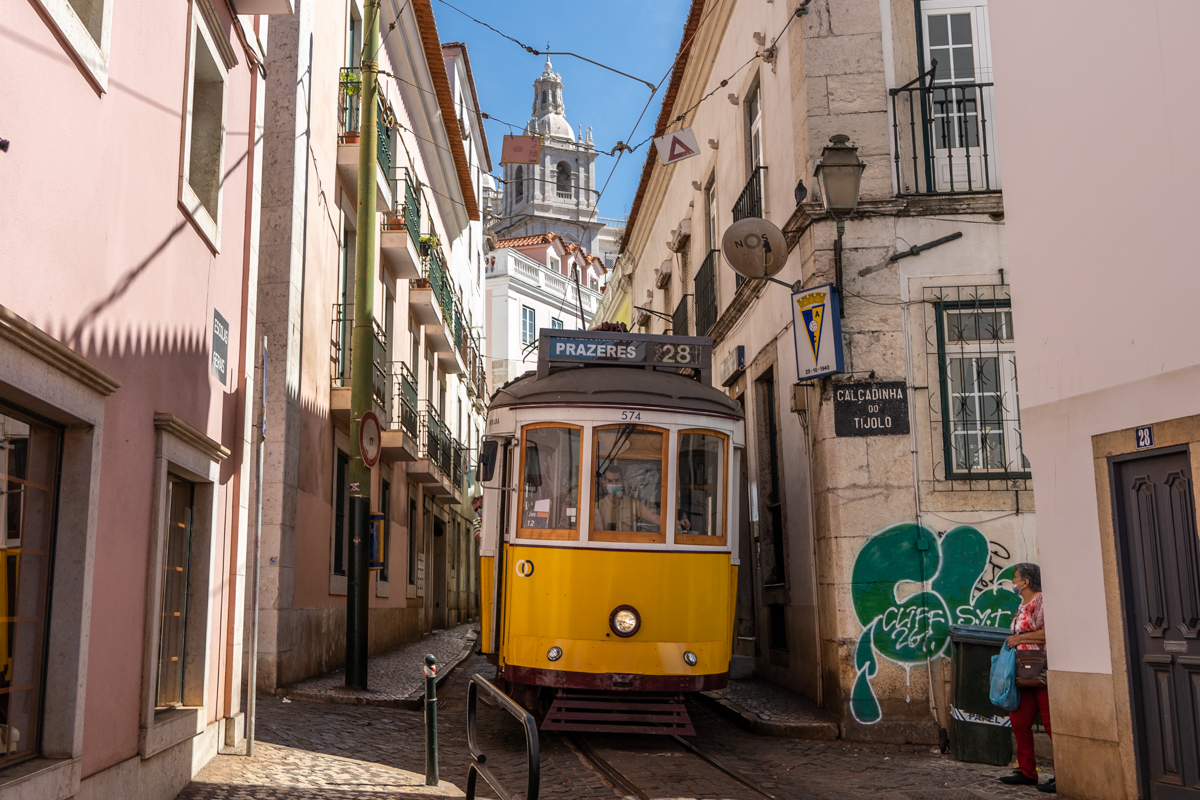
Lisbon, Portugal is a popular city in the south of Europe, known for its sunny weather, tiled buildings and tram streets. It’s a great city to explore–full of historical buildings and beautiful architecture. Wandering the cobblestone streets of Lisbon will uncover quaint neighborhoods, cafes and lots of sweeping views of the city. While there’s lots of things to see, 4 days in Lisbon is the perfect amount of time to visit.
About Lisbon
Located on the west coast, Lisbon is the largest city in Portugal and is also the capital. The city is full of history and famous buildings. The small cobblestone streets take you through different neighborhoods, each with their own personality.
One thing you’ll notice all over Lisbon is the ceramic tiles (or azulejos) whether it’s a small scenic picture on the side of a building or an entire facade covered in a particular pattern. The tile work is particularly charming and makes exploring the city very fun because you never know what you’ll find.
Another icon of the city is the yellow trams. These famous trams rattle all through the streets and make for great photos ops. You may even stumble across narrow streets that barely fit a tram but have just enough room to walk on the sidewalk next to it.
Portugal At a Glance:
- Official Language: Portuguese
- Currency: Euro €
- Capital: Lisbon
- Weather: Moderate temperatures that range between 60º-90º F.
1755 Earthquake
An important part of Lisbon’s history is the 1755 earthquake. It was one of the deadliest earthquakes in history with an estimated death toll between 30,000 and 50,000. The earthquake subsequently caused the river to recede and a tsunami to hit the city 40 minutes later.
At the time, candles had been lit for All Saint’s Day that were knocked over and started a fire in the city. It was catastrophic and the effects of the earthquake were felt across Europe and beyond, with tsunami waves hitting the coast of Africa and even reaching some islands in the Caribbean.
A whopping 85% of Lisbon’s buildings were destroyed during the earthquake. The earthquake is mentioned often while visiting Lisbon’s attractions because it had such an impact on the city. Most of Lisbon’s iconic buildings were damaged and needed to be reconstructed over time.
Getting There:
To get to Lisbon, you’ll be flying into the Lisbon Airport, formally known as Humberto Delgado Airport. It’s located in the north of the city and is about a 15-20 minute ride to the center of things.
Neighborhoods
Lisbon is divided into several neighborhoods that each have their own sort of characteristics. If you go to all the main landmarks, you’ll end up in the most popular neighborhoods at some point. (I kind of sort of hate when people recommend areas because its such a generalized statement and for someone (me) with no directional compass, it doesn’t help much.) It’s also hard (for me) to keep track of neighborhoods when you’re walking all over. But here’s some that you’ll likely be visiting:
Alfama
This is the oldest district in Lisbon and often referred to as the most charming. We ended up staying in this area and it is indeed charming. There’s tiles around every corner, rooftop views of the terracotta buildings and cute streets to wander. It’s very picturesque and a great place to stroll to take in Lisbon’s architecture.
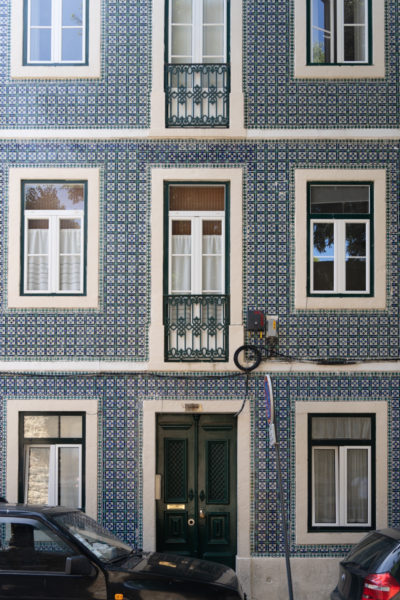
Baixa and Chiado
Some of Lisbon’s most famous attractions are located within Baixa and Chiado. Walk through Rossio Square, down to the Rua Augusta Arch and Comercio Square. These are some of the busiest sections and filled with tourists, but you’ll want to head here to check out some of the main landmarks.
Bairro Alto and Cais do Sodré
If you’re wanting to get a taste of Lisbon nightlife, you’ll want to head to Bairro Alto. This area is filled with restaurants and bars for a lively night out. The area is more artsy and bohemian, though the bar streets can look a little drab in the daylight. This area is home to the famous Pink Street (where you’ll find a row of bars lining the street) as well as some of the smaller tram streets.
Belem
This area is located along the Tagus River to the west of Lisbon and where you’ll find quieter areas. But it’s also home to several of Lisbon’s famous attractions and you’ll definitely want to make your way over to this area during your 4 days in Lisbon to check them out. Most notably is Jeronimo’s Monastery, which is arguably one of the most beautiful attractions in Lisbon.
How to Get Around Lisbon
I had read before going that Lisbon is a city that you do not want to rent a car in, and they were right. The streets in Lisbon are small to navigate and parking would have been very stressful. Not to mention the trams you need to avoid while driving.
I don’t think we would have even been able to find parking around our AirBnb. Another reason to not rent a car is that there are plenty of cheap transportation options, including just walking.
Lisbon is a city where you will need very comfortable walking shoes. I don’t think I’ve ever walked more than I did during our time in Lisbon. There are a lot of landmarks within walking distance but the problem is that the streets are hilly. And the thing is, most of them are so close that it’s easier to just walk.
We did however, decide to take transportation TO an area, walk around and explore, and then often took transportation back.
Trams
Lisbon is of course known for its trams, most of which are still operating with routes around the city. There are two types of trams: the historic trams and the modern trams. The modern trams only run from nearby Comercio Square to Belem. The historic trams are the ones that can be found rattling through the narrow streets of the city.
Tram 28 is the most famous tram route in Lisbon because of the popular route it takes through the city. You’ll go past several landmarks and through several districts in Lisbon. You don’t necessarily have to go looking for it. You’ll see it near the Lisbon Cathedral, the Rua Augusta Arch, etc. We stayed in the Alfama area and saw them everywhere.
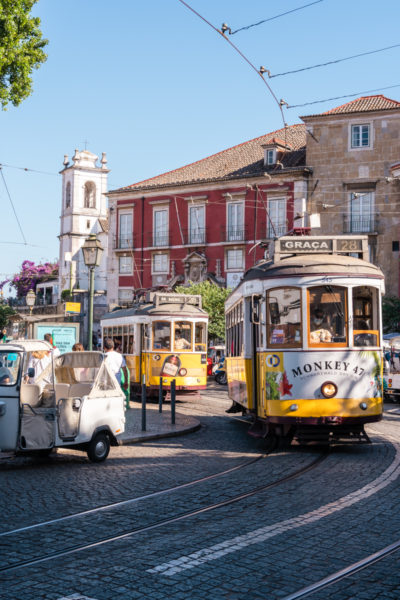
A single tram ticket costs €3, so you’re better off buying a 24-hour transport ticket. It costs €6.45 and lets you take the trams, metro or bus.
However, the trams are a hot commodity as they are quintessential Lisbon. There are a lot of tourists taking the trams and on most rides, it will be standing room only. The queues were long as well and we opted to not take the trams at all. It didn’t look too enjoyable.
Metro
Taking the metro costs €1.50 for a one-way ticket or €6.45 for the all-day transport pass. The metro is probably a great option, really convenient and definitely helps save some money. We didn’t end up taking it because of where we stayed and because of how cheap Uber is.
The 24-hour Transportation Pass includes ALL transportation–including the historic trams and the historic elevator! This pass can only be purchased at metro stations.
Uber
Taking an Uber in Lisbon was so incredibly inexpensive that we chose this as our option every time. We’re also sort of at that stage in our lives where convenience and comfort go a lot further. We walked a lot on this trip and by the end of the day, we were just trying to get back. Getting an Uber was just convenient.
Where to Stay
When we first started looking up places to stay in Lisbon, it got a little confusing because every site kept listing the districts. But Lisbon has a lot of cute areas, and we wanted to stay near enough to some of the major landmarks. We also wanted to be able to walk to a lot of places.
I ended up making the map below to give you an idea of where the main landmarks are. Because without knowing, you might end up really far away from the places you’ll be exploring. With 4 days in Lisbon, you’ll want to be close to main attractions.
We ended up staying in an AirBnb that was near the Church of São Vicente de Fora and the Miradouros (5, 7, 8 on the map below). It was a great area and very beautiful–located in Alfama. I’d recommend staying somewhere within the cluster of landmarks below. Though take note that Pink Street is a popular bar street so if you want a quieter spot, you might not want to be too close to that.
4 Days in Lisbon:
This is a great city to explore and 4 days in Lisbon is the perfect amount of time to see the top landmarks, walk through the neighborhoods and take an amazing day trip. There’s plenty of things to do, but three full days exploring is sort of the sweet spot. A lot of these activities are suitable if you’re traveling solo in Lisbon too–it’s a great city to get lost in.
On the 4th day, you can either choose to explore some lesser visited attractions or head out of the city for the day to a surrounding town. There are many outdoor activities near Lisbon as well.
One thing I hate doing, is visiting an attraction and not knowing that something else is right behind it. We did our fair share of walking and back tracking. Having a little map of the attractions would be really helpful here. I listed out the main attractions in Lisbon and tried to lump them together by proximity and what makes sense for touring around.

Day 1
Explore historical monuments and viewpoints in the Alfama, Baixa and Chiado neighborhoods of Lisbon.
Saint George’s Castle (Castelo de São Jorge)
Sitting atop a hill, the Castelo de Sao Jorge was a fortification built in the 11th century by the Moors. It was used to house military troops and potentially the elite, if needed. Today, there are 11 towers as part of the castle which are open for exploring. There’s a large, open courtyard with archways and architecture that once belonged to the royal residence section of the castle.
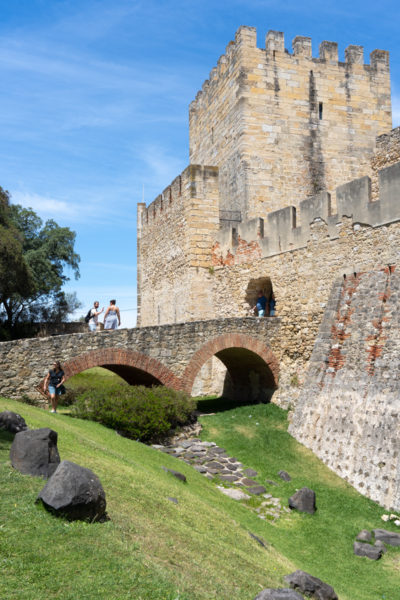
Like most of Lisbon’s main attractions, Castelo de Sao Jorge suffered damage from the 1755 earthquake. But the renovation projects in the early 1900s actually helped to rediscover some of the earlier ruins. There’s an archeological site on the premises that you can walk around, as well as an exhibition that houses objects found during renovations.
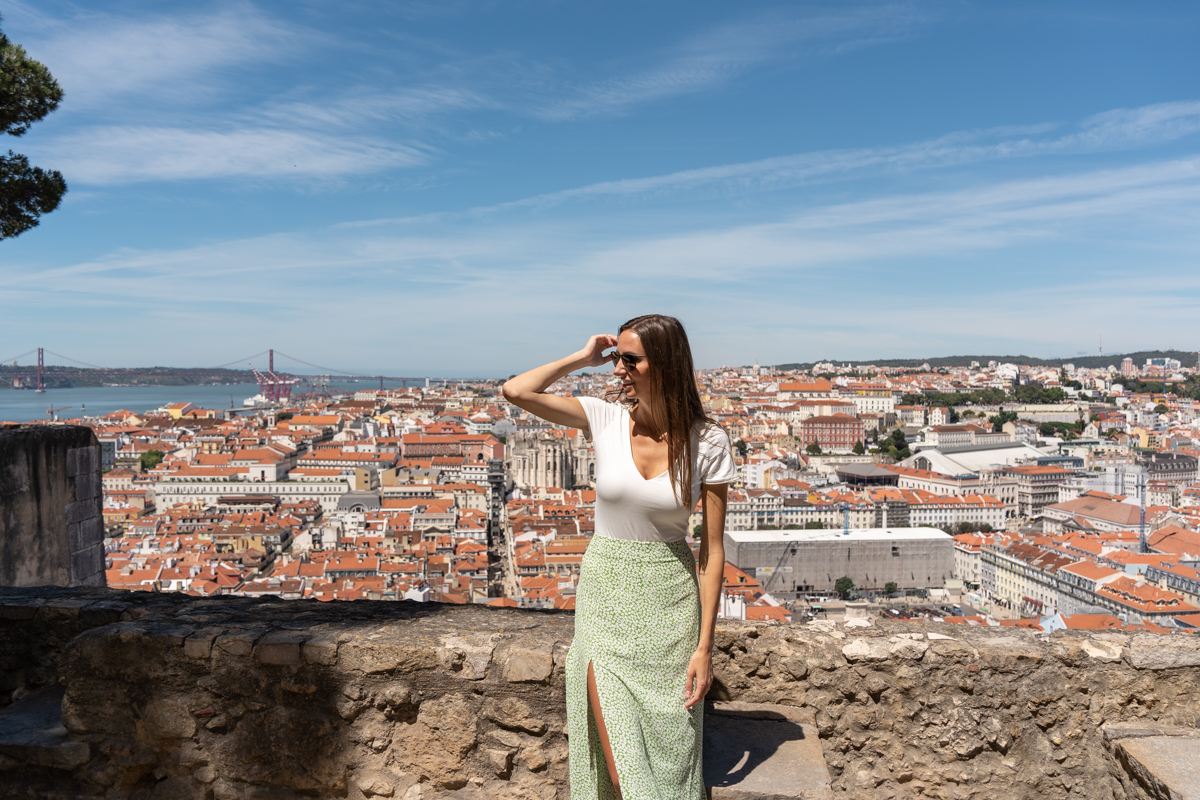
Castelo De Sao Jorge also has a great view of the city immediately upon entering. There’s an ice cream truck tram selling drinks, so it’s a nice place to find a spot to sit down for a bit and enjoy the view.
Rossio Square
Also known as King Pedro IV Square, Rossio Square is one of Lisbon’s busiest areas. It’s the center of Lisbon with lots of shops and cafes located nearby. You’ll also recognize it by its very ‘Rio de Janeiro’ patterned cobblestones. It has a long history as a town square and was once the location for public executions.
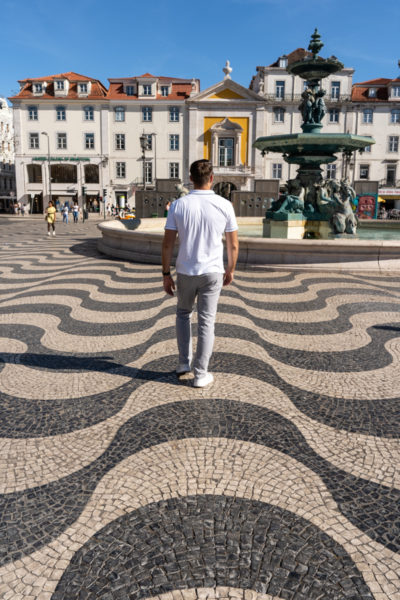
Today you’ll find lots of people wandering about between the two Baroque fountains. It’s also where you can find the National Theater and Rossio Train Station (the one you’ll likely be taking if you decide your 4 days in Lisbon will include a day trip).
Carmo Convent
The Carmo Convent is one of my favorite places in Lisbon, though its history is sad. It was a beautiful Gothic church until the earthquake of 1755 hit and the roof collapsed on the congregation during mass on All Saint’s Day.
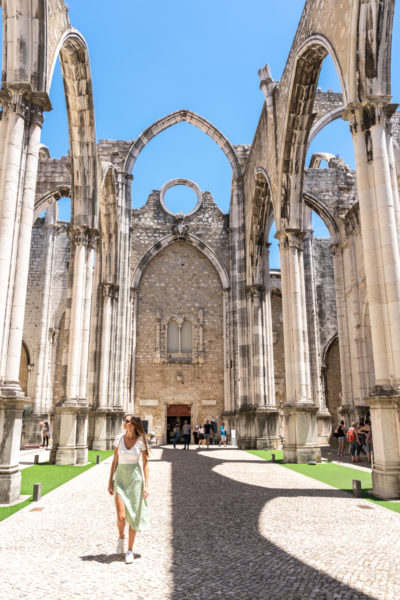
Reconstruction followed the following year but was ultimately suspended. The roof was never rebuilt and the the result is an open air convent with tall gothic arches. It’s sad and beautiful at the same time.
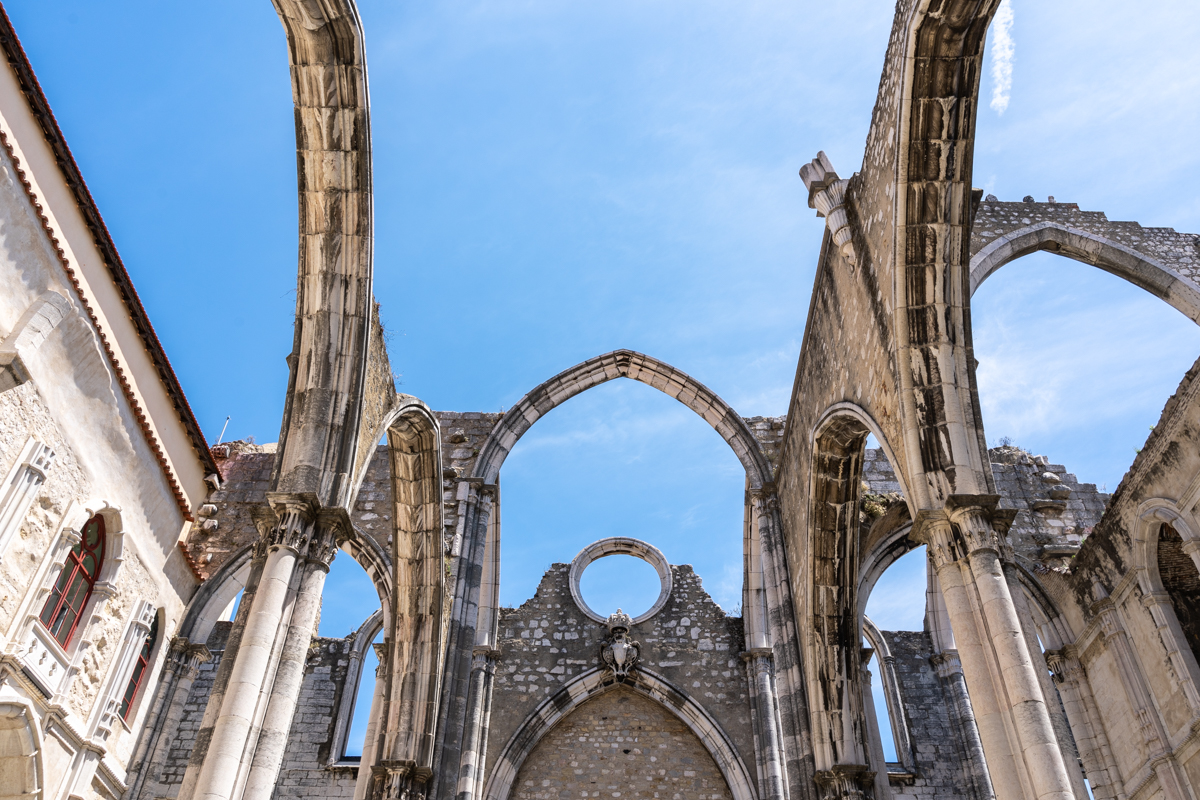
There’s a small museum within the old church that you can step inside too. But it has a bit of a strange collection, including Egyptian and Peruvian child mummies. And allegedly, Christopher Columbus’s wife was buried in the church.
If you visit during the summer, make sure to check if there are any events happening. They sometimes hold concerts or immersive light shows. Kind of kicking myself for not going back in the evening for the Lisbon Under Stars event that was happening while we were there.
Glória Funicular
The Gloria Funicular is one of Lisbon’s most popular trams. It was built in 1885 and carries around 3 million passengers each year up one of Lisbon’s steepest streets. It’s one of three funiculars in the city–the other two being Elevador da bica (which you’ll read more about below) and Ascensor do Lavra (which was the first).
The tram ride is short and sweet, lasting only a few minutes, but it does save you from walking up the steep hill. These trams are the ones covered in graffiti and will take you through streets that are graffitied as well.
Church of São Vicente de Fora
Another church nearby is the Church of São Vicente de Fora. The first King of Portugal, Afonso I, vowed to build Christian churches in locations where Portuguese soldiers and crusaders lay buried. It’s a 17th century church and monastery. Though the original church dates back to the 1500s, with reconstruction happening after the 1755 earthquake and other sections being added through the 1800s.

It also has its own museum inside dedicated to the art and artifacts found here. The museum section is where you’ll find the largest collection of Baroque azulejo tiles in one place. You can also head to the terrace to get a another great view of the city.
Lisbon Cathedral
The Lisbon Cathedral is one of Lisbon’s most important churches and the oldest in the city. It was built in 1147, modified and reconstructed several times throughout history, and became a National Monument in 1910. Today, the church is still open for Mass every Wednesday at 6:30pm or Sundays at 11:30am.
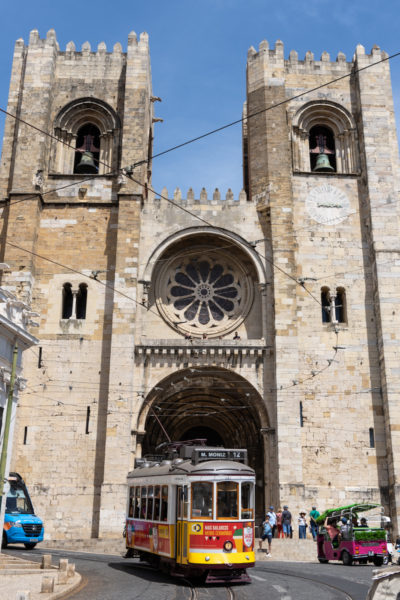
Within the cathedral, you can visit the main chapel (you can head upstairs near the stained glass for a small balcony view outside) and other areas. The treasury upstairs has some incredible gilded artifacts. You’ll also see precious stones, jewelry, illustrated bibles and beautiful clothing worn by priests.
Miradouro de Santa Luzia
Miradouros are viewpoints, and Lisbon has a lot of them. One of the most popular ones to visit is Miradouro de Santa Luzia. There’s a nice courtyard with plants and flowers, but what makes it a nice place to walk around is the tile work throughout the courtyard.
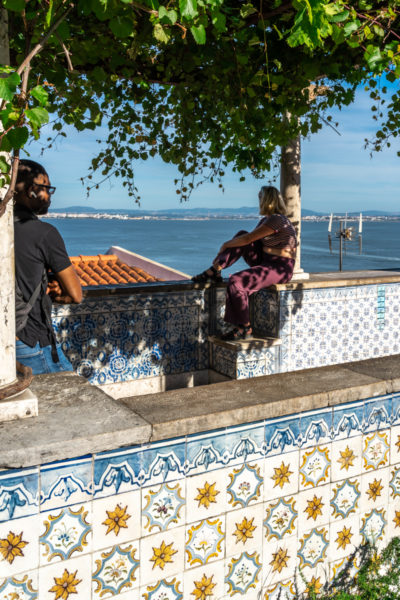
There are places to sit with tile-lined walls and royal blue tile murals on the church next to the courtyard. It’s especially nice to visit at sunset with the golden hues but you’ll likely experience more of a crowd gathering. Our airbnb wasn’t too far, so we stopped by here a few times to just take in the view.
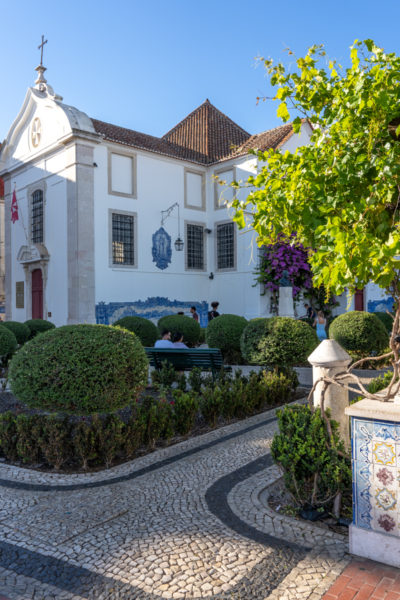
Miradouro das Portas do Sol
A short walk up the street from Miradouro de Santa Luzia will take you to another popular viewpoint: Miradouro das Portas do Sol. It has a great view of the city and also has several restaurants around so you can grab a drink and get off your feet for a bit. It’s also along the tram route so you can hop on or off easily here. Look closely and you can see the Church of São Vicente de Fora in the distance.
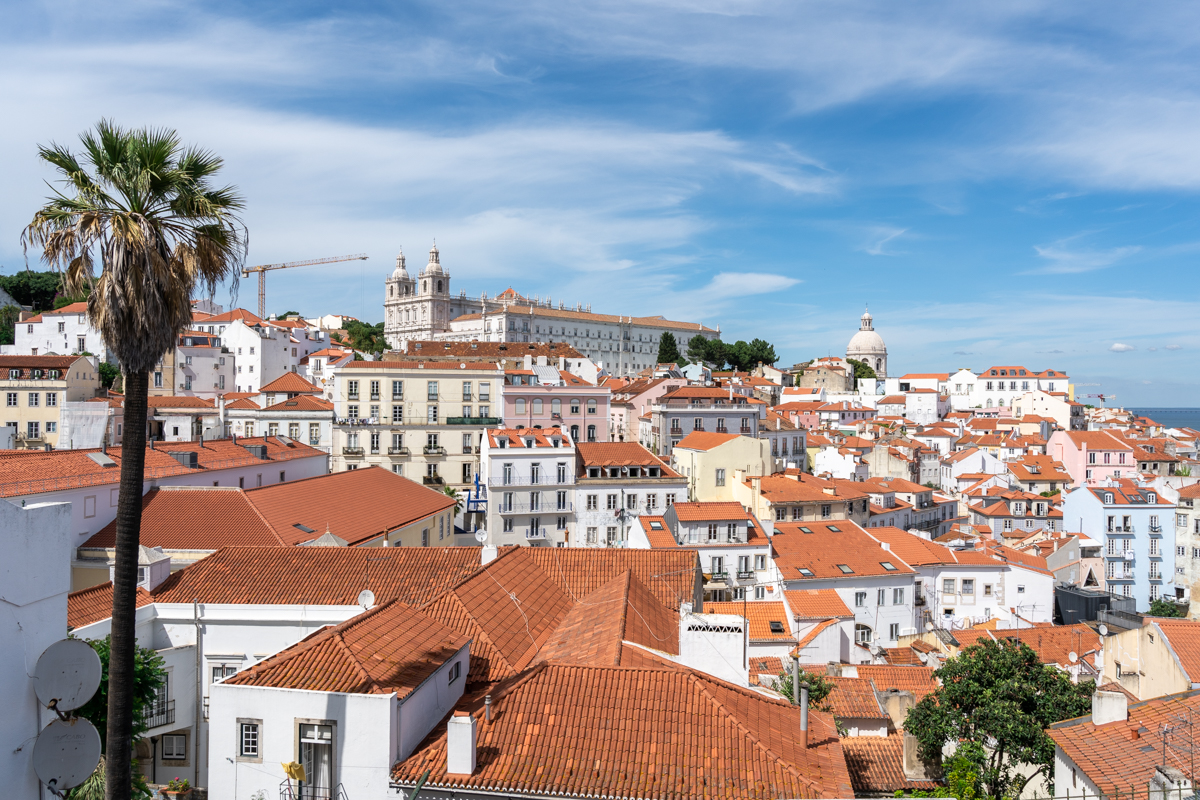
There’s a pizza place on the other side of the street where the food is so-so. They also sell cocktails in a pineapple at a nearby stand, but we noticed the prices changed depending on if you ordered it from the stand or the restaurant. But beer is always a cheaper option.
Day 2
Explore the history of tiles in Lisbon and the neighborhoods of Baixa, Bairro Alto and Cais do Sodré.
National Tile Museum (Museu Nacional do Azulejo)
Though it’s a bit out of the way, the National Tile Museum is a fun place to walk around and see some of the different styles and learn about the history of tiles. The ceramic tiles are seen adorning the walls and as exhibits. The museum is also located inside a former convent and has some beautiful architecture.

It’s particularly interesting to see the ceramic tiles incorporated into the chapel. The gilded accents are stunning and contrast next to tiled scenes. Another highlight is the cityscape of Lisbon from 1738 that’s made from 1300 tiles and is 75 feet in length.
After we walked through the museum, we thought we might walk around the area and see if there was anything to see around us. That was a mistake. We ended up on a walled street in blazing heat which was mostly residential and not scenic. Then we checked out a miradouro nearby which ended up being an empty paved square with a cross statue and some rubbish (and no view). Take the Uber back.
Santa Justa Lift (Elevador de Santa Justa)
The Santa Justa Lift is a historic elevator from 1902. It takes you from Baixa to Bairro Alto and before it was built, it was difficult to get between the two. When it was first built, it was powered by steam but went electric a few years later. It’s open to the public to ride and can fit between 15-20 people on at a time.
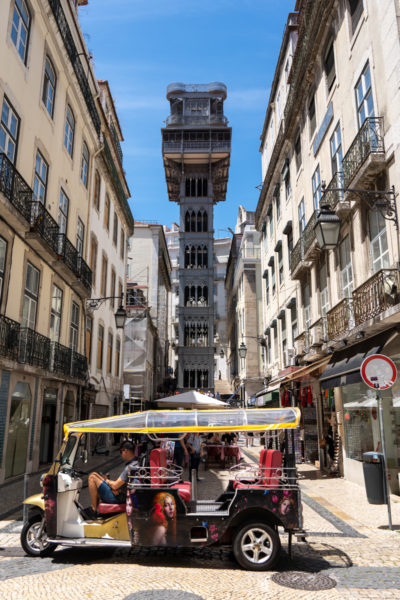
The list is 45 meters high and has an observations deck at the top. So once you ride up, you’ll get a view of the city from above. The line for this can be pretty long at the bottom, but you can also come from the top and take it down.
Tourist Tip: If you bought a 24-hour transportation card, this is actually included in your transport ticket, BUT it doesn’t include entry to the viewing platform. (Transport tickets can only be purchased at a Metro Station.)
Rua Augusta Arch (Arco da Rua Augusta)
The Rua Augusta Arch is a large stone archway right at the entrance to Praça do Comércio (the next on the list). It was built after the 1755 earthquake to commemorate the reconstruction of Lisbon. The stonework is beautiful and off to the side of it, you’ll find arched hallways that lead to shops and restaurants.
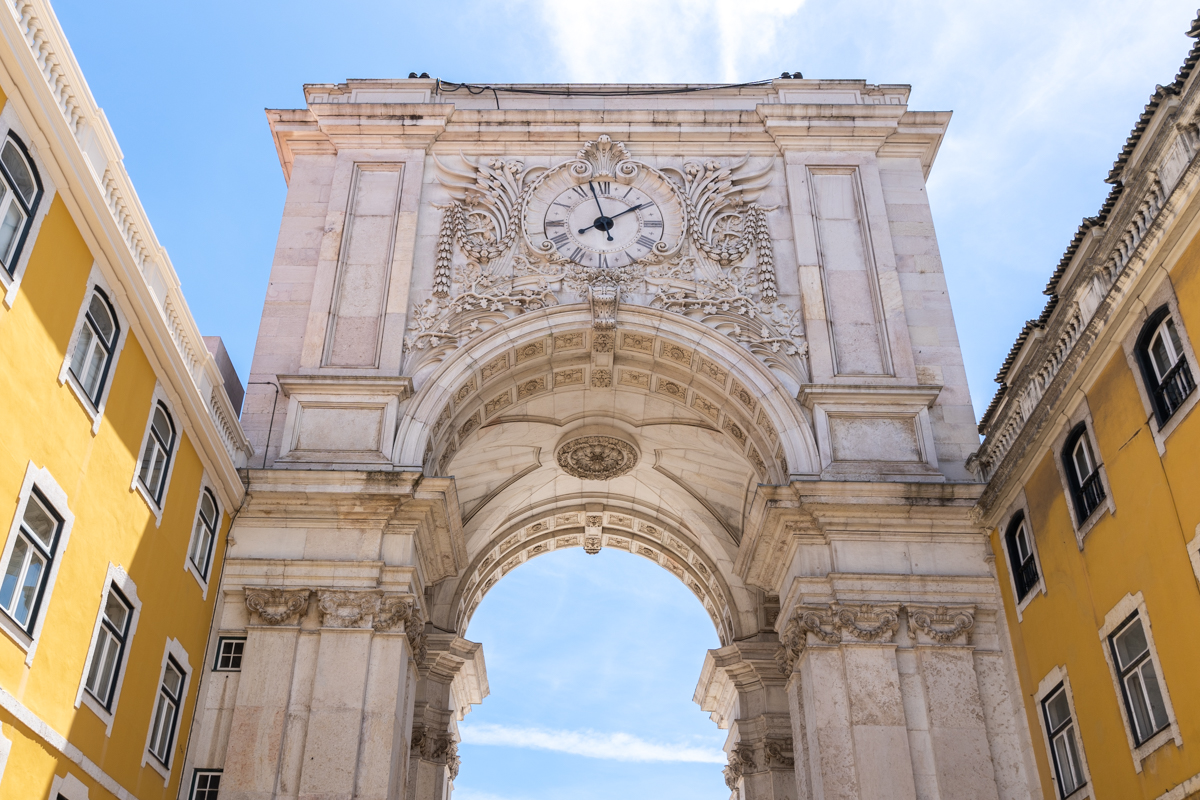
The street walking towards it (Rua Augusta) is a popular tourist area and pedestrian street. There’s a lot of bustling crowds and shoppers in this area. Evidently, you can also go up the arch, either by elevator or staircase to get yet another view of Lisbon.

Comercio Square (Praça do Comércio)
Comercio Square is the main pedestrian square right at the end of Rua Augusta when you walk through the arch. Continue through to the other end of the plaza and you’ll hit the water’s edge. Before the earthquake, the square was actually the location of a royal palace built by King Manuel I. The stone steps leading from the water were meant for royal arrivals and would have led directly into the palace.
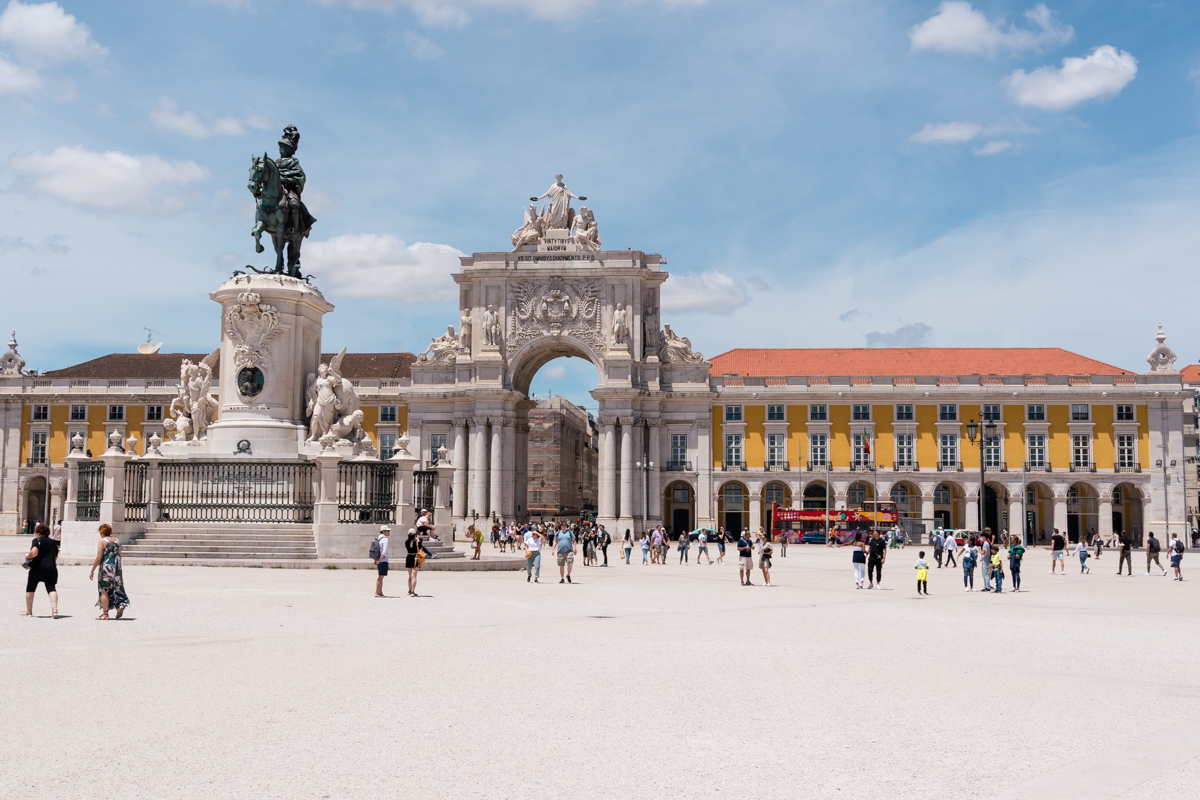
On either sides of the steps, there is a very, very small amount of sand where people will bring their towels to lay out. One side was a bit rocky and there weren’t any people there. But the other side had a handful of beachgoers who laid out there.
Elevador da bica
AKA Ascensor da Bica. One of Lisbon’s most photographed streets is Rua da Bica de Duarte Belo. The tiny street is home to funiculars that were built in 1892 and are the smaller trams you’ll see in the city. The incline of this famous street gives you a view of the water from above.

At one point, the street widens so there are two tracks side by side. If you happen to time it right, or wait for it, you can get a shot of two trams side by side (another famous picture). The one we saw wasn’t moving at all so we figured they weren’t running. As we walked down the street, we eventually saw one leave from the starting point, so you can actually take them up and down the street.
Time Out Market Lisboa
The Time Out Market in Lisbon is essentially a giant food hall with some of the best cuisine in the city. It’s not cheap eats–more like a culinary experience. Each stall is rated by a panel of independent experts and has received at least 4 stars, so you know you’re going to get something good.
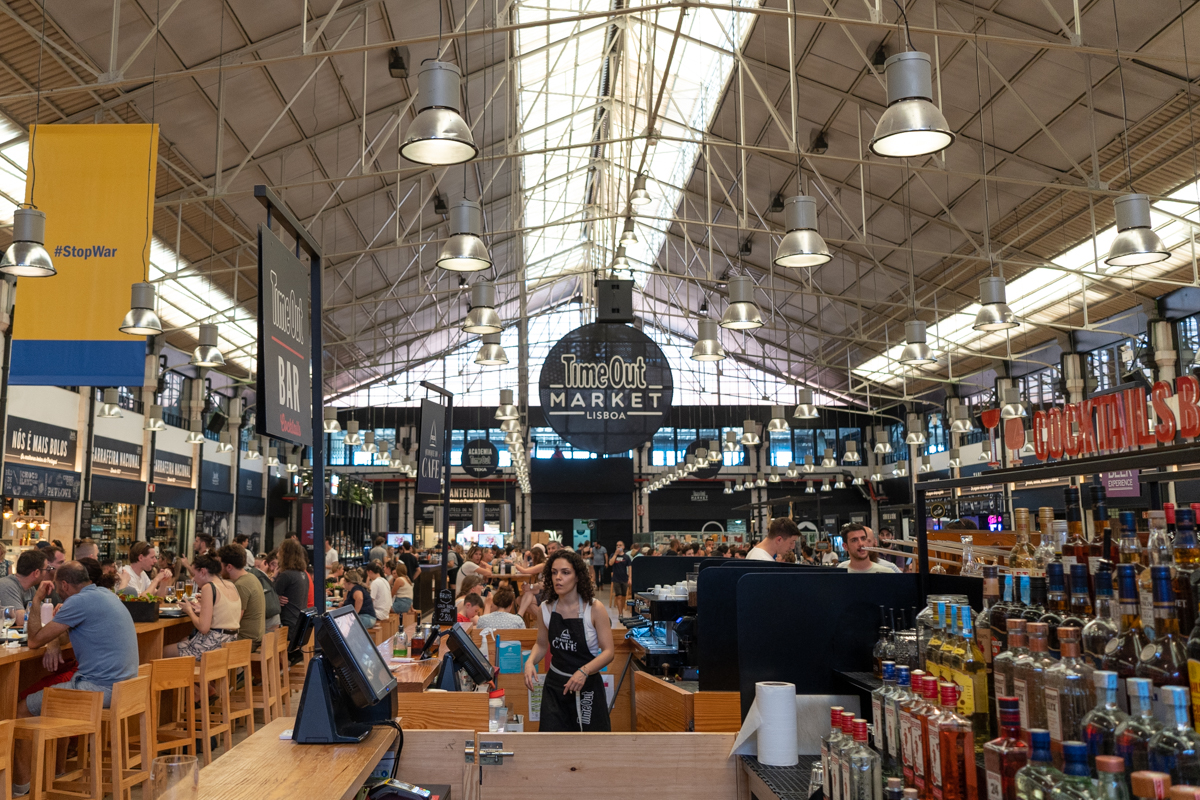
There’s a little bit of everything here and it’s a bit overwhelming to walk around and choose. We ultimately walked the building no less than 3 times before deciding on a random stall. You can grab a seat cafeteria style and head to the bar for a drink while you wait to pick up your food. And it’s open for late night snacks.
Pink Street
Pink Street is where you’ll head if you’re looking for a night out in Lisbon. It’s located in the Cais do Sodre neighborhood which used to be the red light district in Lisbon. Now it’s a hip area filled with bars and clubs.
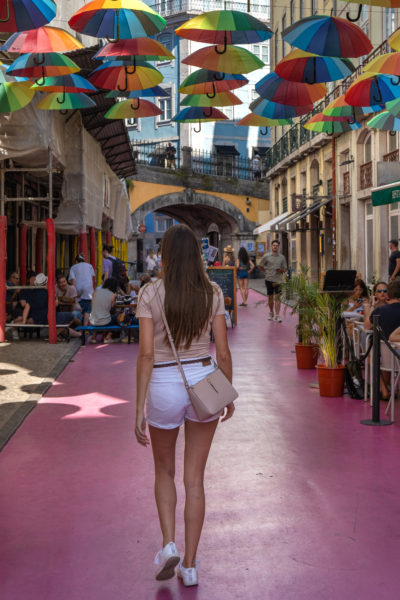
It’s a popular photo spot because of its pink painted street and contrasting yellow bridge. But if you’re going for a photo op, this is one place you don’t want to get to too early. Otherwise you’ll be walking through remnants of the night before. And because it’s a bar street and pedestrian street, some parts of the pink road can be pretty grimy looking. But walk a little further and you’re likely to get a good picture.
Day 3
Explore Belem and Alcântara on the west side of Lisbon for some great historical landmarks, beautiful architecture and city views.
Belem Tower (Torre de Belém)
The Belem Tower is a small 16th-century tower that sits on the water’s edge. But it wasn’t always in this location. The building of Belem Tower took place on a rock outcropping a ways out in the river and was eventually integrated with the shoreline in 1953. Back in the day, it was a point of arrival and departure for explorers and was essentially the gateway to Lisbon.
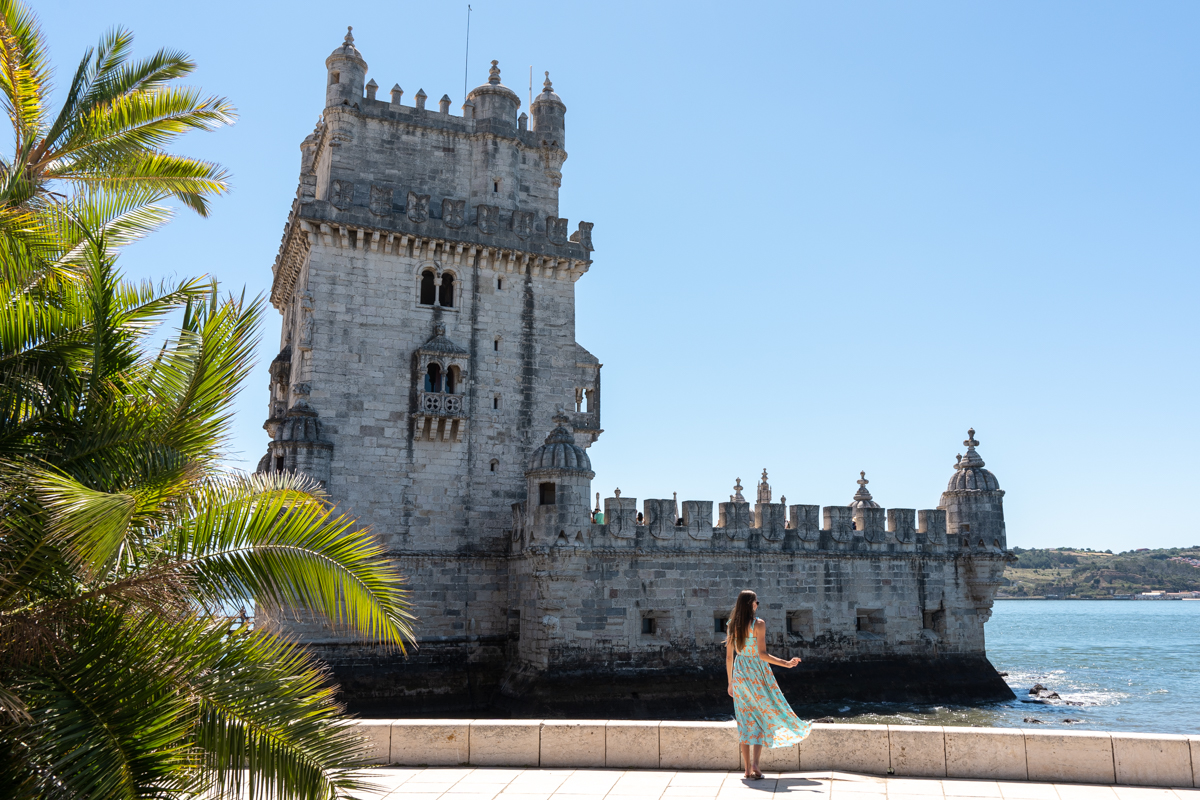
We opted out of exploring the inside because at the time, they had a cap on how many visitors could go in and the wait was long. We also heard that the inside wasn’t as appealing as some of the other places to see, so we kept moving on.
Tourist Tip: This is one of the attractions where the tickets are purchased somewhere else besides the entrance. There’s a ticket kiosk down the sidewalk away from the entrance, so make sure to stop there first before heading down the walkway to the front doors.
Monument of the Discoveries (Padrão dos Descobrimentos)
Just down the street from the Belem tower is the Monument of the Discoveries. This monument was built in memory of Henry the Navigator, 500 years after his death. He was the explorer who discovered Madeira, the Azores and Cape Verde.

The monument stands at 170 ft tall and a ticket to go inside the monument includes a ride up to the top to get a view of the city, river and beyond. In the basement is where you’ll find information on the building and construction.
Jeronimo’s Monastery
One of the most beautiful places to visit in Lisbon is Jeronimo’s Monastery. It’s located right across from the Belem Tower and an easy walk under the street via the connecting walkway. It was declared a UNESCO World Heritage Site in 1983. While construction of the monastery started in the 15th century, it wasn’t finished until the 17th century.
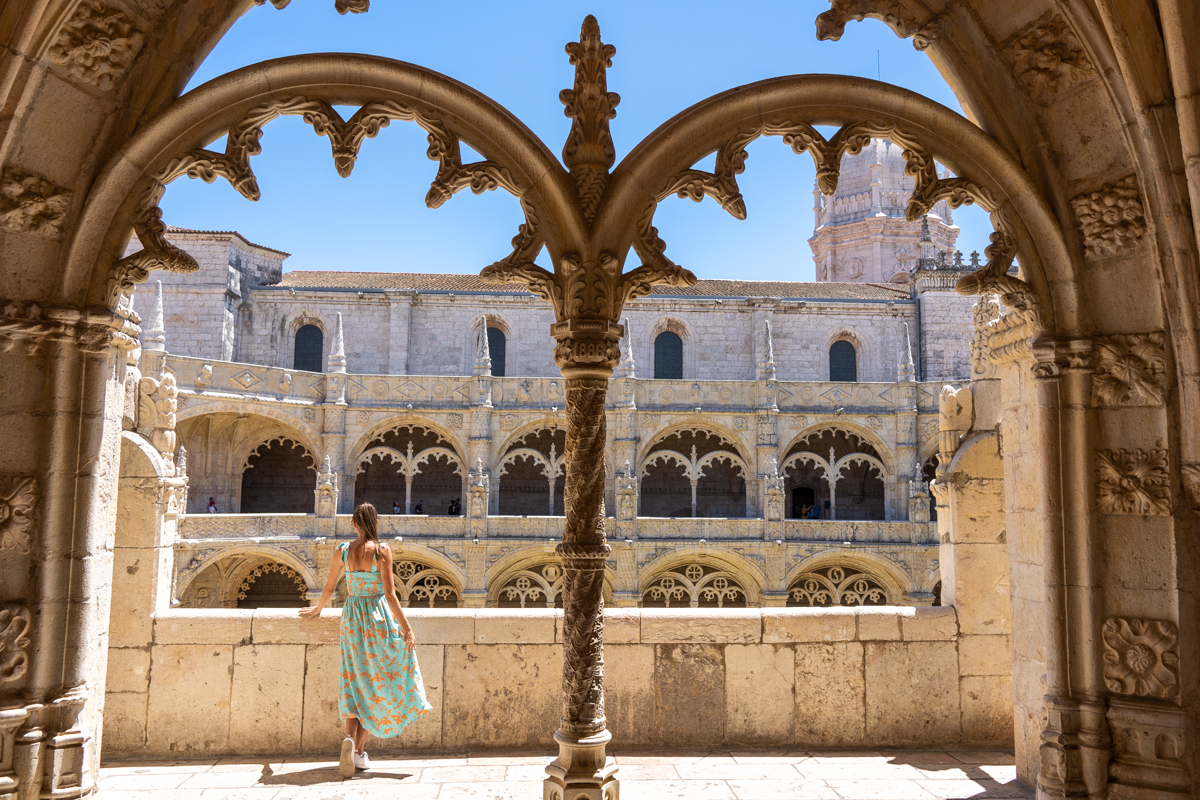
To the right of the entrance is where you’ll find the chapel. It’s free to enter and worth taking a peek inside, though it’s not the most impressive chapel you’ll see. What makes this attraction so beautiful is the cloister facing the courtyard. The intricate archways are simply beautiful as are the vaulted ceilings in the hallways. It’s easy to take your time here just to admire all the details.
Tourist Tip: There are two lines outside of the main door, but you can’t buy tickets there. You have to walk down to the farthest door on the left to buy your tickets, then go back to the main door to enter. The two lines lead you to different areas: the right side takes you to the chapel and the left line takes you to the monastery (the section you definitely want to see).
LX Factory
The LX Factory is an industrial complex within the city that has become one of Lisbon’s most unique and artsy areas. Once abandoned, it was transformed to give the area new life and is now comprised of around 200 businesses, from retail shops to restaurants to office spaces.
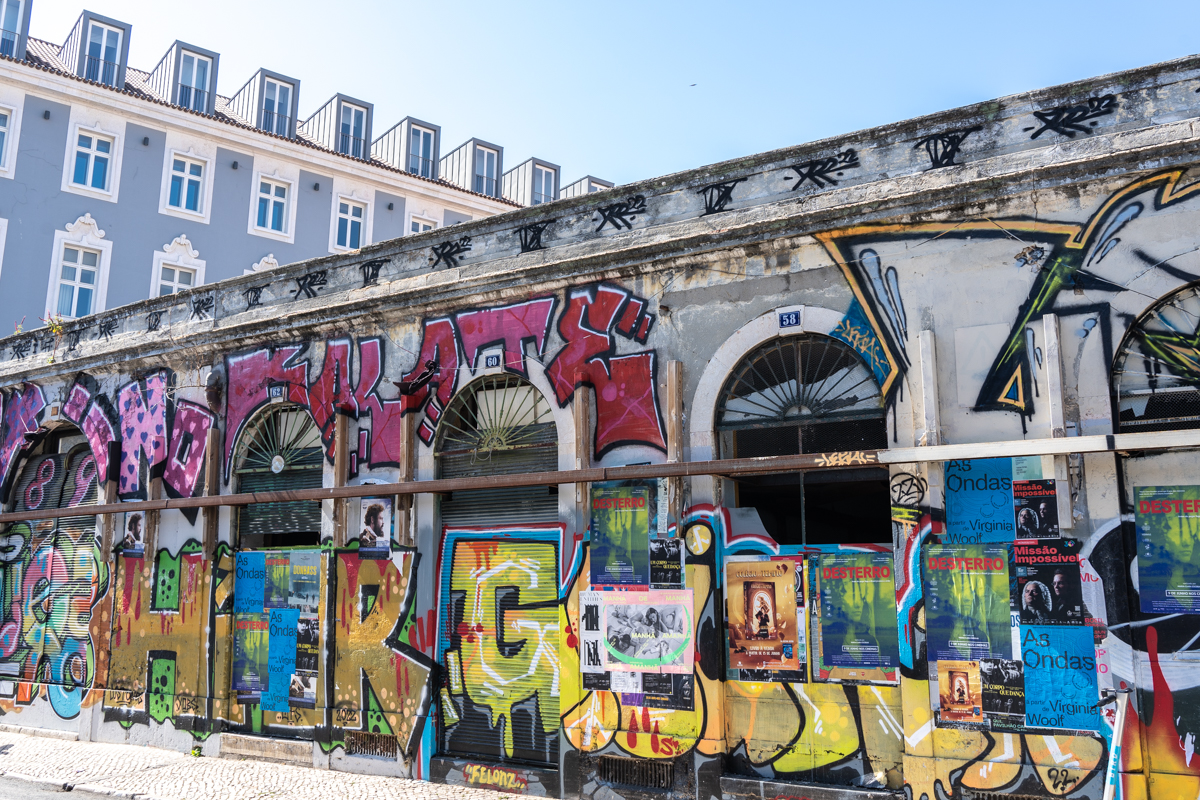
(I think I actually took this picture outside of the Time Out Market, but you’ll see graffiti and art all around the neighborhood near the LX Factory.)
This trendy and quirky area is great for weekend brunch and to stroll around the shops. Pop into the art galleries and the Ler Devagar Bookstore, where you’ll find a floating bicycle sculpture and books stacked to the ceiling.
Pilar 7
Pilar 7 is a bridge experience that lets you get an inside look into Lisbon’s bridge which is similar in looks to the Golden Gate Bridge. The experience takes you through the construction and then leads you up to a viewing platform of the bridge with views of the city and river.
Day 4
Lisbon can be seen pretty thoroughly in 3 days. You’ll have plenty of time to see the main sites and burn your leg muscles. You could stay within the city for day 4 and explore some of the lesser known areas but I highly suggest taking a day trip to Sintra. We actually stayed about a week in Lisbon and anything we saw after day 3 was not anything that compared to spending a day in Sintra.
Option 1: Explore Lisbon further
There are other things to see in Lisbon that aren’t near the city center and if you want to stay local, you can spend day 4 exploring the parts of Lisbon that you haven’t seen.
Sanctuary of Christ the King
While exploring Lisbon, you might have noticed a large statue on the other side of the bridge that looks a bit familiar. The statue of Christ the King was inspired by the famous Christ the Redeemer statue in Rio de Janeiro, Brazil. In fact, the statue is almost as tall as the one in Rio, coming in just 2 meters shorter.
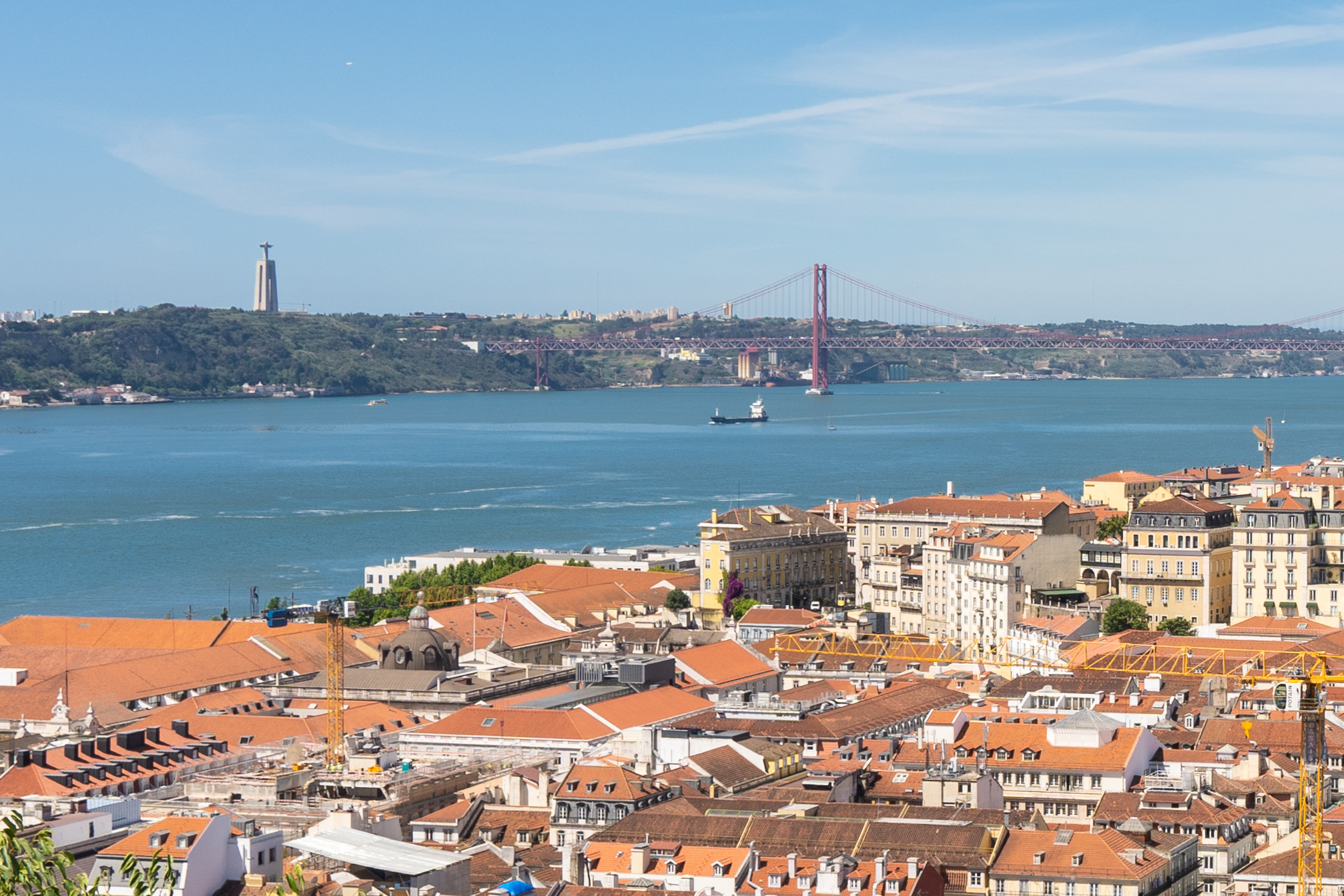
You can go all the way up to the statue which has a 360º terrace in which you can see all over the city.
Palace Fronteira
Outside of the city center is where you can find the red Fronteira Palace. It has a sprawling garden and the palace is adorned inside and outside with beautiful tiles. This former manor is now a national monument and you can take a tour through the rooms to step back in history. Afterwards, you can explore the formal garden and the tiled walls surrounding the gardens.
Palace of Ajuda
Another palace to see is the Palace of Ajuda, which was the last residence of the royal family. Construction was halted when the royals fled to Brazil during Napoleon’s invasion, so the palace was never finished. By the time the royals returned, Portugal had become a republic and the palace was turned into a museum. Tour through the state rooms with art from the 18th and 19th centuries.
Option 2: Take a Day Trip to Sintra
Another option on your 4th day, is to take a day trip to Sintra. There are of course many other places you could take a day trip to but this is one of the top places and is one of the more romantic places in Portugal. Sintra is what fairytales are made of. This town is an easy 40 minute train ride outside of Lisbon and a mountainous region with stunning historical landmarks.
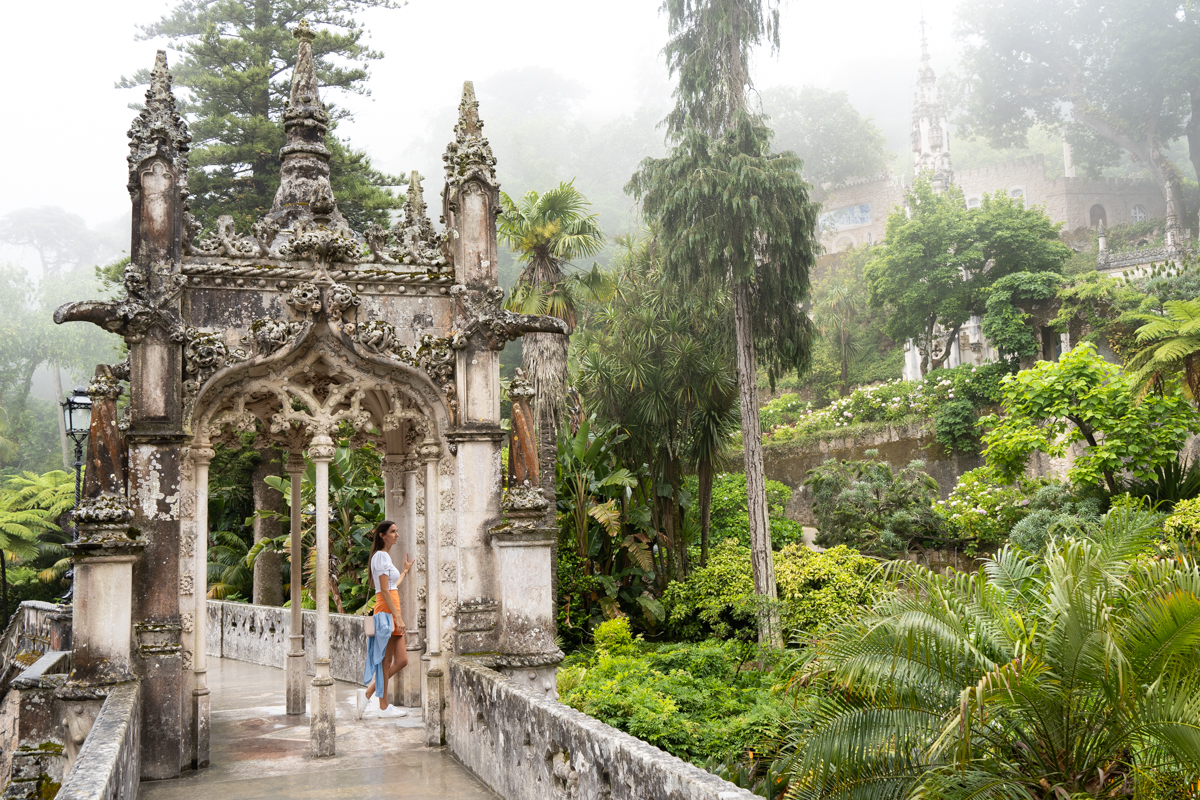
It was (and is) an area that catered to the wealthy, so you’ll find lots of palaces and castles in the area. But the thing is, each has its own history and often are from different time periods, and therefore have different styles of architecture. The most popular place to go by far is the Pena Palace, a red and yellow castle that sits atop a mountain overlooking Sintra and the surrounding area.
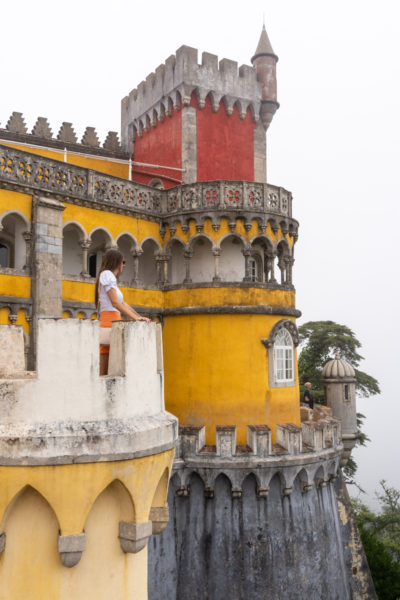
My favorite though was exploring Quinta da Regaleira-a gothic estate just a short walk from the town center. The estate has castle turrets, secret tunnels and the famous Initiation Well.
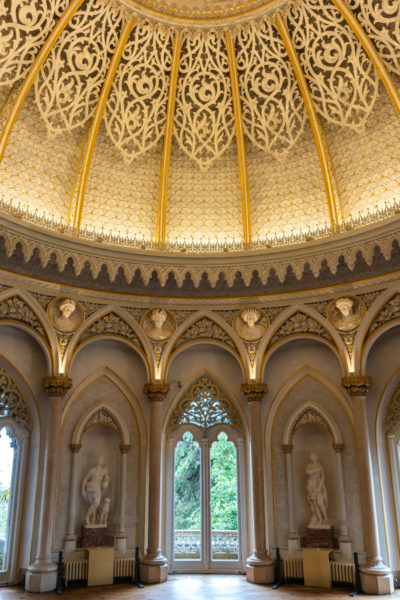
Quite honestly, there is so much more to see in Sintra that you could easily spend more than a day here. But, it makes a great day trip because you have a lot of different options when it comes to exploring. The area is beautiful and it was a highlight of our trip.
Travel Tips for Lisbon
- Bring cute tennis shoes to walk the city (more on that below)
- Take note of what line you’re waiting in. Some lines to get into an attraction are not the same place you can buy a ticket. Look for a ticket office before you wait in line because you might have to back track (Belem and Jeronimo’s Monastery were two notable ones).
- If you stay in an AirBnb, make sure to read the fine print–your place may or may not have A/C (a lot of them don’t). Ours did not, and it was brutal.
- Not all miradouros are the same. I wrongfully assumed you could just pick any and they’d be worth visiting. We went to explore some in less popular areas and they were just empty concrete spaces. Not worth the uphill walking in the heat.
Lisbon Pass
I’m going to go against the grain here and say that buying the Lisbon pass is probably not worth it. This pass is €21 and includes transportation for the day and access to several of the top attractions and discounts for many others.
You can check it out and see for yourself, but for us, it never made sense to buy. The one day where we thought it might save us some money was going to Belem, but the entrance tickets ended up being around the same price as the Lisbon Pass.
It also includes a LOT of museums on the pass. If you’re a museum person and plan on going to several of the museums, it might make sense for you to buy it.
Safety
For the most part, Lisbon is a safe city, but you want to make sure to watch your belongings on trams, metros and at major attractions, as those are typically targeted places. We didn’t have any issues personally but we did witness some guys just straight up steal sunglasses from a store on one of the streets that leads to the Rua Augusta Arch.
We were sitting at a cafe when it happened–the guys walked off and we told the store owners immediately. When we saw the guys again, we pointed them out and they got into a confrontation with the store owners in the street but the owners ended up getting the sunglasses back!
But crazy enough, those guys walked off and still hung around. We could see them down the street hanging around the intersection just watching people, so we knew they were looking for targets to pickpocket. So just be precautious in major tourists areas and always make sure wallets and phones are not in back pockets, purses are worn cross body, etc.
What to Bring
This is extremely important. Whatever cute outfits you are planning on bringing, make sure they all go with tennis shoes. Don’t even waste your luggage space with sandals and heels. Because the uniform here is cute outfits with tennis shoes. Not because it’s trendy, but because it’s necessary.
I feel like a lot of travelers will bring their cute shoes and sandals, and then pack that one pair of sports tennis shoes just in case they do any hiking. The sports shoes are usually never used, but on this trip, you could point out everyone who packed like this. Because we saw a lot of women wearing their cute summer dresses or outfits with sports tennis shoes, because they had nothing else suitable.
So make sure you’re prepared and get yourself a pair of cute, comfy, casual tennis shoes because it will be the only thing you wear during your 4 days in Lisbon.
Foods to Try
During your 4 days in Lisbon, make sure to try some popular Portuguese dishes:
- Pastéis de Nata– a type of custard egg tart that you’ll find at bakeries
- Sardines– grilled sardines are a popular dish in the summer months, especially during festivals
- Bifana Sandwich– marinated pork on bread, often served alone but we saw people eating them with crispy potato fries and mustard/mayonnaise
PIN IT FOR LATER


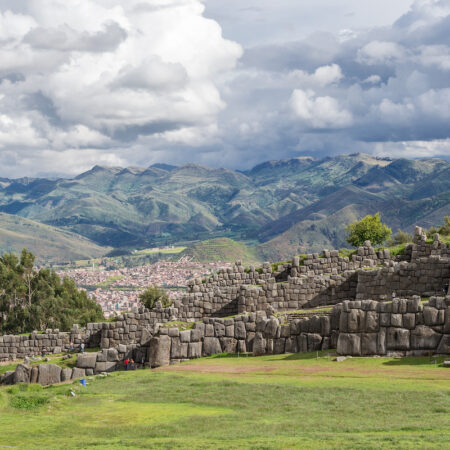


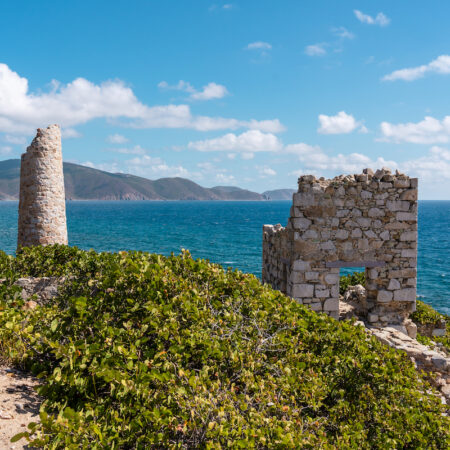

I’m going to Lisbon in February so this post was perfect. It is so well researched and helpful. I really appreciate the map to sort out all the confusing sites in Lisbon. Thank you, I will keep this with me while I am in Lisbon as it will be so relevant.
Wonderful, thorough post! Your photos really capture the beauty of Lisbon. Portugal is a treasure of a trip.
I loved taking the yellow tram around Lisbon but I was surprised how often you had to get off and get on a different tram. Be prepared to stand.